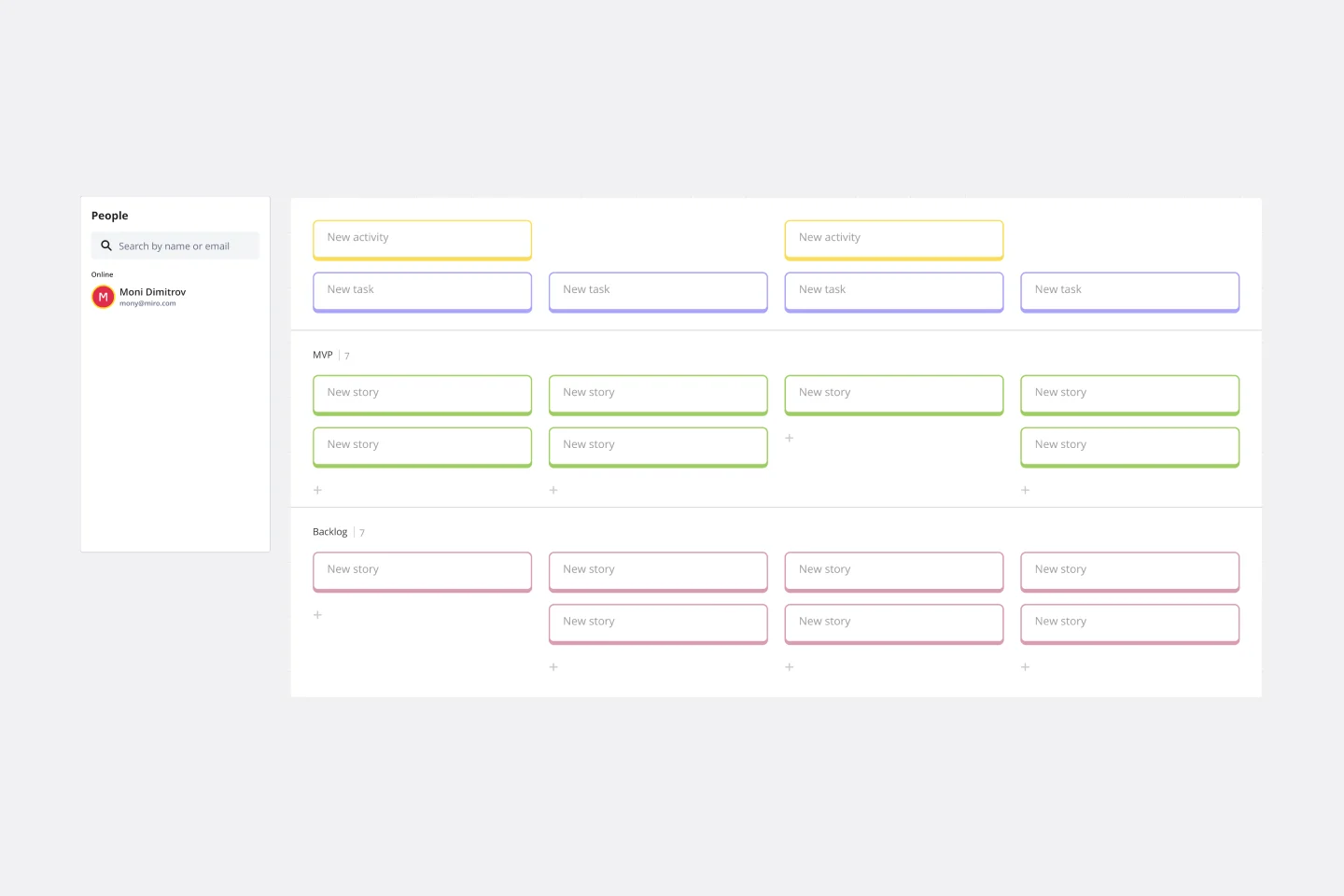About the Empathy Map template
Many businesses and organizations have created an empathy map template to help them understand their audiences, users, and customers. It’s a great tool to gain insights and develop personas or customer segments.
What is an empathy map?
Empathy maps are visualization tools that allow you to articulate what you know about specific types of users. They are often considered a part of the design thinking methodology, and they empower you to create a shared understanding of user needs and help decision-makers with key judgment calls.
One good empathy map example is how UX professionals use it. They must create products beneficial to users they have never met or interacted with. To do so, it’s important to understand their users and help their colleagues do the same, so an empathy map is a powerful tool that helps them do both.
Benefits of empathy mapping
Many businesses employ empathy mapping as part of the design process because it’s helpful in understanding your users, their desires, and what they want out of your product.
Put a narrative to your data
The basis of empathy mapping is typically some firsthand data received from users that describe their thoughts on using the product. One of the major benefits of empathy mapping is that it requires you to tease out more about the customer from this data, determine what they’re feeling, and create a narrative that informs the rest of your UX & UI design.
Get inside the heads of your users
Empathy maps are also a useful exercise because they force you to put yourself in the shoes of your users and determine how they approach and interact with your product. It’s easy for designers to lose sight of real-world user experience with the product, so empathy maps help keep you grounded.
Easily visualize customer needs
Another benefit of empathy mapping is that it’s a visual exercise that distills various pieces of information about the customer experience into a single reference point. Empathy maps can be used and referenced by different stakeholders and team members at various points of the development cycle, and they’re relatively simple to create.
When to use an empathy map
Empathy maps are highly useful whenever your team needs a greater understanding of user needs, such as collaborating on user personas, and building the “user” in your user story.
Empathy maps help you sketch out profiles for a user or persona. They distill your knowledge into a single source of truth. An empathy map can help you summarize and analyze qualitative research such as survey responses and interview transcripts. By putting this information on a single page, you can uncover gaps in your knowledge and figure out how to fill them. Empathy maps are easy-to-use and digestible methods to illustrate user attitudes and behaviors.
The 4 elements of an empathy map
Empathy maps are divided up into four quadrants.
1. Says
The Says quadrant records what a user says during an interview. Try to capture exact quotes, such as, “I use this product every day because it helps me streamline my workflow.”
2. Thinks
In contrast, the Thinks quadrant summarizes what the user is thinking throughout the experience. Based on your qualitative research, ask yourself what occupies the user’s thoughts, what matters to them, and what challenges they’re facing. The key here is to uncover the things they might be too shy or reluctant to share. For example, “This feature is really irritating.”
3. Does
Like the name implies, the Does quadrant captures the actions the user takes. For example, if you’re watching a user interact with a product, you could record the following: “Keeps refreshing the page.”
4. Feels
The Feels quadrant records user emotions. What worries them? What excites them? For example, “The user is excited about the price point. The user is worried that this is too hard to use.”
Create your own
Miro is the perfect workspace to create and share your empathy map. Get started by selecting this empathy map template. Then fill the four quadrants discussed above and brainstorm different points to add to each section via sticky notes based on the initial customer statement. Or, if you wish, you can create your own empathy map example from scratch, using our diagramming and collaborative features.

Miro
Your virtual workspace for innovation
Miro is an innovation workspace designed for teams of every size, everywhere, to dream, design, and build the future together. Our mission? To empower these teams to create the next big thing, powered by AI at every step of the way. Over 90 million users around the world rely on Miro to untangle complex ideas, put customer needs first, and deliver products and services faster. All supported by best-in-class security, compliance, and scalability.
Categories
Similar templates
User Story Map Template

User Story Map Template
Popularized by Jeff Patton in 2005, the user story mapping technique is an agile way to manage product backlogs. Whether you’re working alone or with a product team, you can leverage user story mapping to plan product releases. User story maps help teams stay focused on the business value and release features that customers care about. The framework helps to get a shared understanding for the cross-functional team of what needs to be done to satisfy customers' needs.
User Story Map Template

User Story Map Template
Popularized by Jeff Patton in 2005, the user story mapping technique is an agile way to manage product backlogs. Whether you’re working alone or with a product team, you can leverage user story mapping to plan product releases. User story maps help teams stay focused on the business value and release features that customers care about. The framework helps to get a shared understanding for the cross-functional team of what needs to be done to satisfy customers' needs.